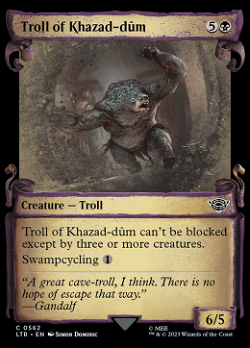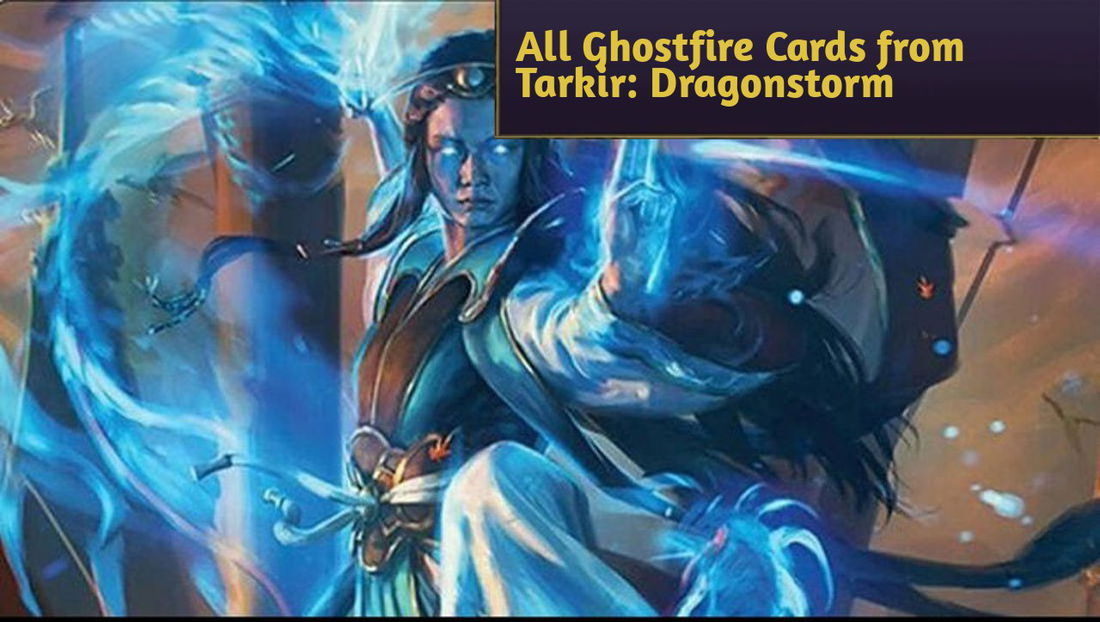Introduction
Greetings, Legacy community!
We have all been waiting… and speculating a lot. Well, the March 2025 banlist update is finally out, as well as all the negative feedback and adverse reactions all banlist updates get. Before we unravel how this banlist impacted our dear format, let's see the actual March 2025 bans:
Troll of Khazad-dûm and Sowing Mycospawn are banned in Legacy.
According to WotC, the Legacy meta was relatively balanced, but, in their opinion, slower archetypes like Control and Midrange had lost space, and the idea behind these changes was to open some space for these macro-archetypes. At the same time, they hoped these decks also reigned in some "All-In" archetypes.
Ad
Let's see the reasons they stated for each ban, and how they'll impact Legacy.
Troll of Khazad-dûm

For the third time in a row, another card in Dimir Reanimator has been banned. First, they banned Grief, then Psychic Frog, and now this card. Despite the initial bans, this deck was still at the top of the format, and, though it wasn't as oppressive as before, it was still pushing strategies out of Legacy. It was sort of obvious WotC was going to do something, even though some players (me included) didn't actually believe this would happen right now.
Once they decided to hit this deck, then it was a matter of how. I believe they had 3 cards in mind for this ban: Entomb, Reanimate, and Troll of Khazad-dûm. Banning Entomb would basically destroy the entire archetype, and, as they stated in their announcement, this wasn't the goal. Reanimate is problematic because it is so efficient, but we have other ways to bring cards back from the dead, so the deck structure wouldn't change much if it was banned. Though, playing Exhume or Shallow Grave instead would not be ideal.
This leaves us with Troll of Khazad-dûm.
This Troll made Dimir Reanimator a lot more consistent, as we could do a lot with it in the list: it is, by itself, a Reanimation target, as it already puts itself in your graveyard for 1 mana, all on its own. Though it isn't as impactful as Atraxa, Grand Unifier or Archon of Cruelty, many decks can't answer a virtually unblockable 6/5 on turn 2. Furthermore, it made your mana base more stable, as it let you use Wasteland, something unheard of before we started playing Troll of Khazad-dûm. Finally, this card opened a lot of space in this list, considering we had to play many Reanimation targets before. Our alternative game plan (without Entomb) was discarding the Troll with Careful Study or a self-Thoughtseize.
This space was promptly filled with a second game strategy that turned this deck into a Dimir Tempo, first with Psychic Frog, and more recently with Barrowgoyf and Murktide Regent. So, without the space and redundancy this Troll offered, this deck will have to reinvent itself.
We have the original Dimir version with Careful Study. We have the Rakdos version with Faithless Looting, Tin Fins, which plays the Griselbrand / Shallow Grave combo, and budget Monoblack versions or Grixis versions with Oliphaunt instead of the Troll.
The only certain thing is that, as a concept, Reanimator will still be a part of Legacy.
Sowing Mycospawn

The first ban was relatively well-accepted by the community and didn't inspire much debate, but we can't say the same about the second ban. Before we get into the feedback, let's see how WotC justified this decision.
According to them, Mycospawn does a bit too much in Legacy, such as finding endgame pieces like Eye of Ugin and interactive lands like Blast Zone and Karakas. However, its greatest strength is how it hits enemy lands, first because it gets Wasteland. Its most heinous offense is that it can hit basic lands, which are usually safe from any card that hits the mana base. This Eldrazi often hits two lands at once, and this ends up affecting slower strategies and pushing them to the edge of the format. So, if the idea was making Control and Midrange more relevant, hitting Sowing Mycospawn makes sense. They claimed it disrupted the format and broke the sacred concept of basic lands being safe. So, it was banned.
Ad
However, the controversy is that not all of us share this opinion. Yes, indeed, Mycospawn attacking your mana base is not pleasant at all. In fact, a lot of players actually think this is the correct decision.
On the other side, many players also think a creature that costs 4 mana, with Kicker 2, is a problem the meta can deal with. Some say that, as long as Eldrazi is a tier-1 deck, Control lists are dead. Eldrazi and Cloudpost ramp do perform really well against decks that try to win through attrition, but these successful decks aren't centered around Blue and will certainly become a lot less efficient. They might not even be able to remain competitive after this ban.
I, personally, didn't like this decision, as I think Eldrazi is a good aggro list in a format with so many combos. Cloudpost Ramp, despite being considered Combo by some, is more like a Control list in Legacy. These archetypes might have indeed spun out of control with Ugin, Eye of the Storms, but I don't believe it would be too unusual for this format's power level.
That being said, many players have asked for this ban, and many other players wonder how much the pressure online influenced this decision.
The Post-Ban Meta
WotC said they're keeping an eye on "All In" decks like Oops All Spells and Red Stompy. They stated they hope these bans indirectly buff decks that can, in some degree, prey on these archetypes. And, according to them, these archetypes are acceptable in terms of presence and efficiency. So, they didn't change anything in them.
Another card that escaped was our dear Nadu, Winged Wisdom. It might be terrible for the game, but the real issue is that its numbers online (which are a database for WotC) are often underestimated. Many players simply don't like playing this deck because of the many abilities they'll have to respond and target.
As for the winners of the banlist, they're naturally the decks that struggled the most against Reanimator and Eldrazi, which should get a breath of fresh air, but some decks struggle against one and not the other. For instance, Sneak & Show and Red Stompy struggled against Reanimator, but they were great against Eldrazi, so they won some, and lost some.
We'll have to wait and see if, as WotC wants, decks that struggled against Mycospawn will grow and prey on decks like Oops.
Finally, they didn't unban anything, which was a surprise to me, as I thought they'd certainly unban Hermit Druid. We won't have anything new to play.
Final Words
Honestly, I thought WotC wouldn't ban anything in this window, so I spent an entire afternoon a bit troubled, trying to digest everything. They might have reigned in Reanimator a bit, but they didn't completely destroy it, which was good news.
As for the Mycospawn ban, I wasn't too happy about it. I thought hitting a deck I, personally, consider interesting for the format to, supposedly, remove an obstacle for attrition archetypes was a bit too much. I believe the meta has bigger problems, like decks that consistently kill you on turn 1 even over disruption.
Ad
On the other side, I don't have access to the vast data WotC has, so, let's hope these changes do what they want them to do, and bring us to a more balanced format.
What did you think of these changes? Tell us your thoughts in our comment section below.
Thank you for reading, and see you next time!










— Comentarios0
Se el primero en comentar